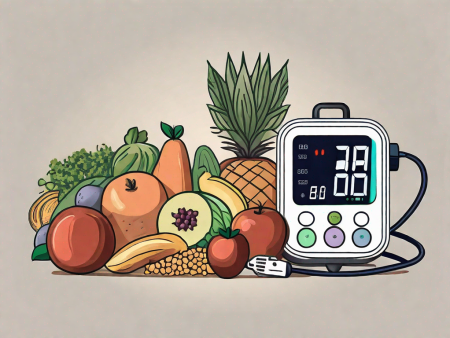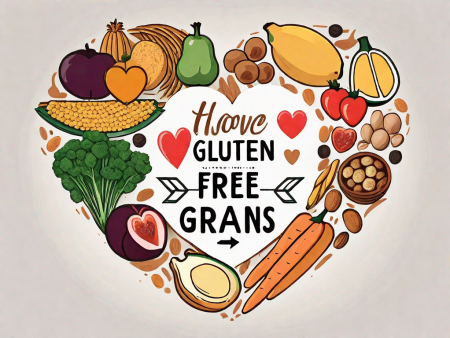Discover the intricate relationship between tobacco and alcohol consumption and their impact on chronic disease risk.
How Does Tobacco and Alcohol Consumption Impact Chronic Disease Risk?
In a world full of tempting vices, it’s time we take a serious look at the impact of tobacco and alcohol consumption on our risk of chronic diseases. From lung cancer to liver disease, these two culprits have been wreaking havoc on our health for decades. So strap in, folks! We’re about to take a journey through the dark and twisty world of chronic diseases and how these indulgences play a significant role in their development.

1. Understanding Chronic Diseases
Before we dive deep into the consequences of tobacco and alcohol consumption, let’s get on the same page about what chronic diseases even are. These sneaky little buggers are long-term conditions that hang around like pesky relatives who overstay their welcome. They stick with us day in and day out, making us feel like we’re carrying an extra burden on our shoulders.
But what exactly are chronic diseases? Well, they are more than just a mere inconvenience. Chronic diseases are those persistent foes that linger in our bodies, affecting various organs and systems. They come in all shapes and sizes, like a never-ending buffet of ailments. We’re talking about conditions such as heart disease, diabetes, stroke, and arthritis, just to name a few. These diseases are often slow to develop, but once they settle in, they can be difficult to shake off.
Now, let’s take a closer look at the prevalence of chronic diseases globally. These ailments aren’t just rogue troublemakers; they’re a global epidemic. They sneak into every corner of the world, making themselves at home in both developed and developing countries. No one is safe from their grasp, as they affect people of all ages, races, and socioeconomic backgrounds. It’s as if these diseases have a wicked sense of equality.
Imagine a world where chronic diseases didn’t exist. A world where people could live their lives without the constant worry of their health deteriorating. Unfortunately, that’s not the reality we live in. Chronic diseases are here to stay, and it’s up to us to understand them better and find ways to prevent and manage them.
1.1 Definition and Types of Chronic Diseases
Now that we have a general understanding of chronic diseases, let’s delve deeper into their definition and the various types that exist. Chronic diseases, as mentioned earlier, are long-term conditions that persist over time. They are characterized by their ability to affect different organs and systems in the body, causing a wide range of symptoms and complications.
When it comes to the types of chronic diseases, the list is extensive. It’s like a never-ending maze of medical terms and conditions. Some of the most common chronic diseases include cardiovascular diseases (such as heart disease and stroke), respiratory diseases (like chronic obstructive pulmonary disease), diabetes, cancer, and arthritis. These are just a few examples, but there are many more out there.
Each type of chronic disease has its own unique set of symptoms, risk factors, and treatment options. For instance, heart disease may present with chest pain, shortness of breath, and fatigue, while diabetes may manifest as increased thirst, frequent urination, and unexplained weight loss. Understanding the different types of chronic diseases is crucial in order to recognize the signs and seek appropriate medical care.
1.2 Prevalence of Chronic Diseases Globally
As we mentioned earlier, chronic diseases are not limited to specific regions or populations. They have become a global burden, affecting millions of people worldwide. In fact, the World Health Organization (WHO) estimates that chronic diseases are responsible for approximately 71% of all deaths globally.
But what exactly makes chronic diseases so prevalent? Well, there are several factors at play. Firstly, the aging population is a significant contributor. As life expectancy increases, so does the likelihood of developing chronic diseases. Additionally, lifestyle factors such as poor diet, lack of physical activity, tobacco use, and excessive alcohol consumption play a significant role in the development of these diseases.
It’s important to note that chronic diseases do not discriminate. They affect individuals of all ages, races, and socioeconomic backgrounds. Whether you’re a young adult or a senior citizen, a person of color or of Caucasian descent, rich or poor, chronic diseases can impact your life in profound ways.
Furthermore, the burden of chronic diseases extends beyond the individual. It affects families, communities, and the healthcare system as a whole. The cost of treating chronic diseases is staggering, both in terms of financial resources and human capital. It places a heavy burden on healthcare providers, who must navigate the complexities of managing these long-term conditions.
In conclusion, chronic diseases are more than just a nuisance. They are a global epidemic that affects individuals from all walks of life. Understanding the definition, types, and prevalence of chronic diseases is essential in order to address this growing public health issue. By raising awareness, promoting healthy lifestyles, and investing in research, we can work towards a future where chronic diseases no longer hold us captive.
2. The Role of Tobacco in Chronic Diseases
Now, let’s shine the spotlight on the notorious partner in crime: tobacco. It may seem innocent enough, but don’t be fooled, my friends. This devilish delight has a laundry list of biological impacts on the body, and none of them are pretty.
Tobacco, in all its forms, has been a long-standing villain in the realm of public health. Its detrimental effects on the human body are well-documented and have been the subject of countless studies and research. From the moment it enters the scene, nothing is safe – not even our precious organs.
2.1 Biological Impact of Tobacco on the Body
When tobacco enters the body, it unleashes a cascade of harmful substances that wreak havoc on our respiratory system. The inhalation of tobacco smoke introduces a toxic mix of chemicals, including nicotine, carbon monoxide, and tar, into our lungs. These substances irritate the delicate tissues of the respiratory tract, leading to chronic inflammation and damage.
Our lungs, once pristine and efficient, become battlegrounds for the harmful effects of tobacco. The smoke coats the inner lining of the lungs, turning them into their own personal ashtrays. Over time, this accumulation of toxic substances can impair lung function, making it harder for us to breathe and increasing the risk of developing chronic respiratory conditions such as chronic obstructive pulmonary disease (COPD) and emphysema.
But wait, there’s more! Tobacco doesn’t limit its destructive tendencies to the respiratory system alone. It also has a tango with our cardiovascular system, posing a significant risk for heart disease and stroke. The toxic substances in tobacco smoke can damage the lining of blood vessels, causing them to narrow and restrict blood flow. This, in turn, increases the likelihood of developing conditions such as atherosclerosis, coronary artery disease, and hypertension.
The biological impact of tobacco on the body is far-reaching and multifaceted. It not only affects our respiratory and cardiovascular systems but also has detrimental effects on other organs and bodily functions. For instance, tobacco use has been linked to an increased risk of developing cancers of the mouth, throat, esophagus, pancreas, bladder, and kidney.
2.2 Link Between Tobacco and Specific Chronic Diseases
As if the biological chaos wasn’t enough, tobacco also plays a significant role in the development of specific chronic diseases. Lung cancer takes center stage here, claiming countless lives each year. The carcinogens present in tobacco smoke, such as benzene, formaldehyde, and polycyclic aromatic hydrocarbons, can cause genetic mutations in lung cells, leading to the uncontrolled growth of cancerous tumors.
But it doesn’t stop there! Tobacco’s harmful influence extends beyond lung cancer. It has its grubby hands in other types of cancer as well, including those affecting the mouth, throat, esophagus, pancreas, bladder, and kidney. The toxic substances in tobacco smoke can infiltrate these organs, causing cellular damage and increasing the risk of malignant transformations.
In addition to cancer, tobacco use is also strongly associated with respiratory diseases such as chronic bronchitis and pneumonia. The constant exposure to tobacco smoke weakens the immune system’s ability to fight off infections, making smokers more susceptible to respiratory infections and their complications.
Furthermore, tobacco’s impact on oral health cannot be ignored. The chemicals in tobacco smoke can wreak havoc on the gums and teeth, leading to gum disease, tooth decay, and tooth loss. Smokers are also more likely to develop oral cancers, with the risk increasing with the duration and intensity of tobacco use.
It is evident that tobacco is a real troublemaker when it comes to chronic diseases. Its biological impact on the body, coupled with its association with specific diseases, underscores the urgency of tobacco control efforts and the need for widespread awareness about the dangers of tobacco use.
3. The Role of Alcohol in Chronic Diseases
Now, let’s toast to the next troublemaker: alcohol. It’s the life of the party, but it comes with its own set of devastating consequences for our health.
3.1 Biological Impact of Alcohol on the Body
Alcohol is like a whirlwind romance, sweeping through our bodies and leaving chaos in its wake. It dances with our liver, damaging the very organ responsible for processing it. Not to mention, it has a sly dance with our brain and nervous system, causing impairments that can range from mild slurred speech to complete blackout moments. Cheers to consequences, eh?
3.2 Link Between Alcohol and Specific Chronic Diseases
If you thought tobacco had a tight grip on specific chronic diseases, hold on to your drink! Alcohol has quite the repertoire when it comes to its impact on our health. Liver disease takes center stage here, with alcohol-related liver cirrhosis putting on quite the show. Yet, alcohol doesn’t stop at the liver – it’s associated with a myriad of other conditions like pancreatitis, heart disease, and even certain types of cancer. Quite the notorious character, wouldn’t you say?
4. Co-occurrence of Tobacco and Alcohol Consumption
Now that we’ve met the two troublemaking amigos separately, it’s time to bring them together and see what kind of chaos they can create when they team up.
4.1 Combined Effects of Tobacco and Alcohol on the Body
When tobacco and alcohol join forces, they create a whole new level of havoc on our poor bodies. It’s like a mischievous symphony conducted by the devil himself. Together, they increase the risk of various diseases, including cancers of the mouth, throat, and esophagus. They’re a tag team you don’t want to mess with.
4.2 Chronic Diseases Associated with Combined Consumption
Chronic diseases love company, and when tobacco and alcohol come knocking at the door simultaneously, they gladly invite them in. This dynamic duo is associated with an increased risk of not only cancer but also liver disease, cardiovascular problems, and those lovely respiratory diseases. It’s a horrifying dance party you’d want to skip, my friends.
5. Prevention and Control Measures
Okay, enough doom and gloom! Let’s take a breather and talk about prevention and control. After all, the best way to thwart these troublemakers is to nip them in the bud.

5.1 Strategies for Reducing Tobacco and Alcohol Consumption
When it comes to reducing our dance with danger, we have to get creative. From advertising restrictions to education campaigns, there’s no shortage of strategies to help us put down the cigarettes and sip more responsibly. It’s time to fight back and not let these vices control our lives.
5.2 Role of Public Health Policies in Prevention
But we can’t do it alone, folks. We need the big guns on our side, also known as public health policies. These policies can create an environment that discourages tobacco and alcohol consumption, making it harder for them to tempt us into their clutches. It’s time for our governments and health organizations to step up and protect us from these lurking dangers.
And there you have it, folks! A wild journey through the dark corners of tobacco and alcohol consumption and their impact on chronic disease risk. It’s time to take control of our health and kick these troublemakers to the curb. Remember, life’s too short to let them dictate our destiny. So, let’s raise our glasses to a healthier, brighter future!







I don’t think the title of your article matches the content lol. Just kidding, mainly because I had some doubts after reading the article.